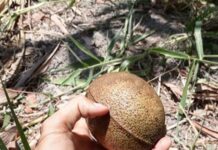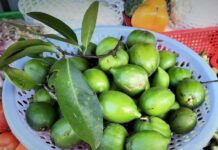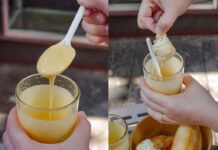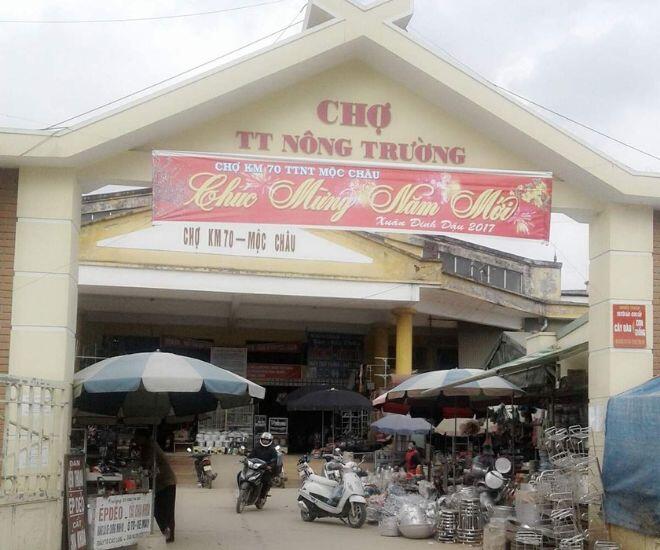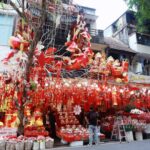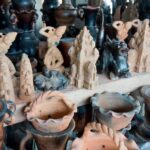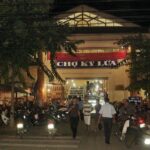A Journey Through Time: The Evolution of Moc Chau’s Iconic Market
The Moc Chau Farm Town Market is more than just a marketplace; it is a testament to a unique socio-economic model that flourished in Northern Vietnam after 1954. Historical records reveal that following the restoration of peace, the Northern government established state-owned farms to pioneer agricultural development and stabilize the population.
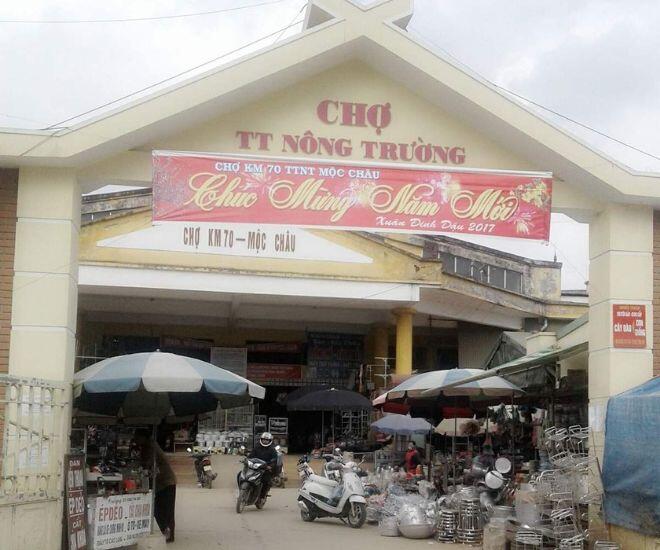
In Moc Chau, a dairy farming and tea plantation enterprise was established in the 1960s, attracting workers from diverse regions. Initially, the market was a barren land where families of workers and local ethnic groups gathered for trade.
In 1968, the Moc Chau Farm Town was officially established, paving the way for the region’s sustainable development. Despite the dissolution of the farm town in 2025, with its merger into new wards, the market retained its significance as a pivotal hub for commerce and culture in this highland region.
A Cultural Crossroads
Nestled in the Phieng Luong neighborhood of Moc Chau Ward (formerly Farm Town), along the vital Le Thanh Nghi road, the market spans approximately 2,000 square meters. It is a vivid manifestation of the interplay between indigenous culture and concentrated agricultural economics, divided into two main sections.
The fresh produce section occupies around 60% of the market space, showcasing an array of highland specialties such as cat ear cabbage, chayote, pumpkin, and, most notably, an assortment of fresh dairy products – the pride of Moc Chau. Each dawn, from 4 to 5 a.m., farmers arrive with their fresh produce, infusing the market with a vibrant, lively atmosphere.
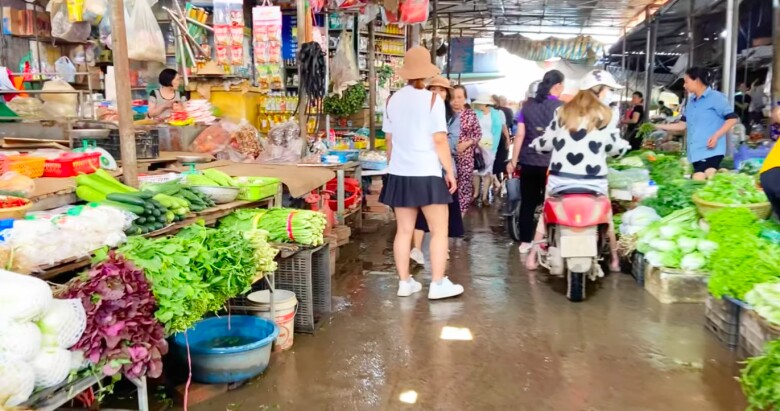
The remaining 40% of the market is dedicated to handicrafts and culinary delights, where visitors can discover the exquisite Thai woven fabrics, traditional tools, and, most enticingly, food stalls offering local specialties. The handicraft section showcases hand-woven textiles adorned with traditional Thai and ethnic minority patterns, preserving the region’s cultural heritage.
Highland Delicacies
The Farm Town Market boasts a unique array of specialties, including the revered Shan Tuyet tea, sourced from ancient tea trees on the plateau. This tea variety, priced between 50,000 and 100,000 VND per kilogram, boasts a robust flavor and abundant antioxidants. The distinct climate and altitude of Moc Chau impart a singular character to this tea, setting it apart from all others.
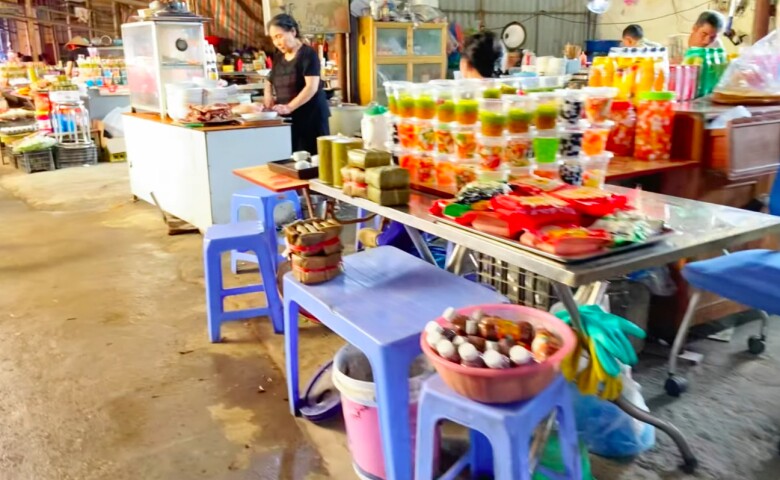
Fresh dairy products from Moc Chau are the region’s iconic offering, presented in various forms: glass bottles, sterilized plastic bags, or transformed into delicacies like milk cakes and fresh cheese. Each day, approximately 250-300 liters of milk are delivered directly to the market, ensuring the ultimate freshness for consumers.
Moc Chau’s forest honey is another sought-after delicacy, priced between 300,000 and 500,000 VND per liter. Harvested from the pristine forests, this honey boasts a clear appearance and the distinctive aroma of highland floral nectar.
A Culinary Journey
The market’s culinary zone is a must-visit for anyone eager to immerse themselves in the authentic flavors of Northwest Vietnam. “Be chao,” a delicacy of young beef marinated in a distinctive blend of ginger, lemongrass, and “mac khen” (a local spice), fried to perfection in hot oil, is served in small eateries lining the market for 120,000-150,000 VND per dish.
The secret to delectable “be chao” lies in selecting beef from calves aged 6-8 months, marinating it in “mac khen,” and frying it at just the right temperature to retain the natural sweetness of the meat.
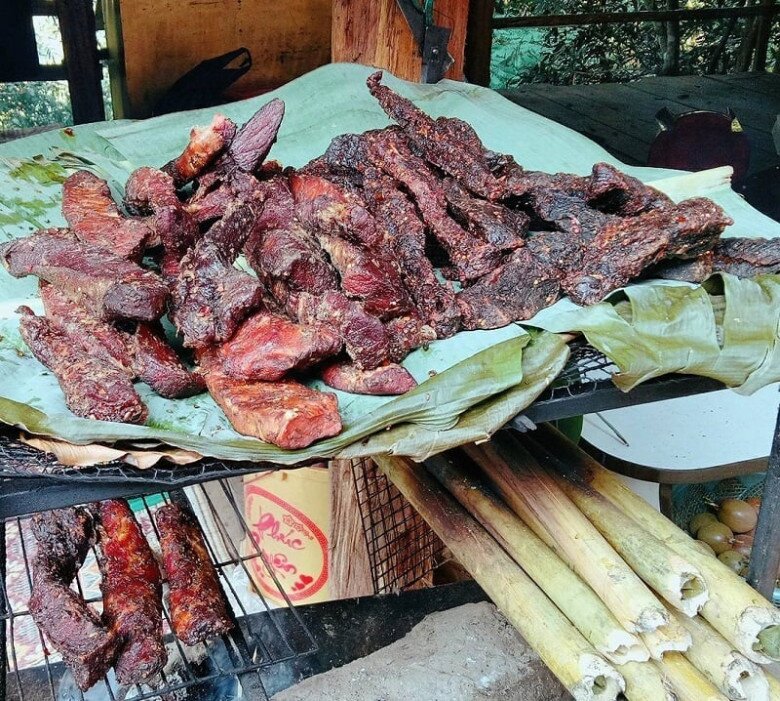
Grilled stream fish, a quintessential mountain dish, is prepared from fish caught in the nearby Nam Sap stream. The fish is grilled over charcoal, preserving its natural flavor, and is typically accompanied by a spicy dip made of chili, lime, and salt.
Xoi ngu sac, a ceremonial dish of the Thai people, is also sold in the market for 20,000-30,000 VND per serving. The five natural colors of the sticky rice represent the five fundamental elements in the Thai universe: earth, water, fire, wood, and metal.
Preservation and Development Initiatives
According to a 2025 survey by the Moc Chau District People’s Committee, the Farm Town Market faces significant challenges in the digital age. Approximately 40% of traders have shifted to the Moc Chau Night Market, lured by the larger tourist crowd and modern facilities.
The Farm Town Market competes not only with the night market but also with newly established mini-marts and convenience stores in the area. Younger generations tend to favor air-conditioned, cleaner shopping environments over traditional markets.
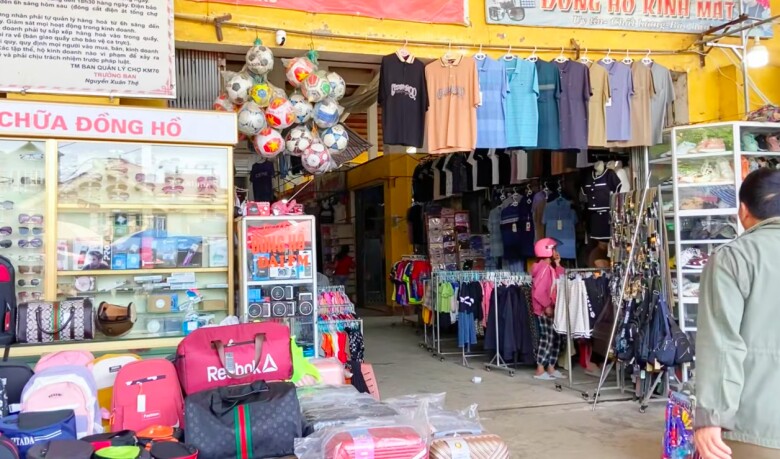
More alarmingly, the decline in traditional handicraft production threatens the market’s cultural identity. Only 15 Thai households continue the tradition of weaving, compared to 60 a decade ago.
Confronted with these challenges, local authorities have implemented diverse strategies to preserve and promote the value of the Farm Town Market. The “Chợ xưa – Hồn mới” project aims to harmoniously blend cultural preservation with sustainable tourism development.
One notable initiative is the organization of “A Day as a Farmer” tours, allowing visitors to engage in activities like tea plucking, cow milking, and learning the art of weaving. This not only generates additional income for locals but also contributes to the preservation of traditional crafts.
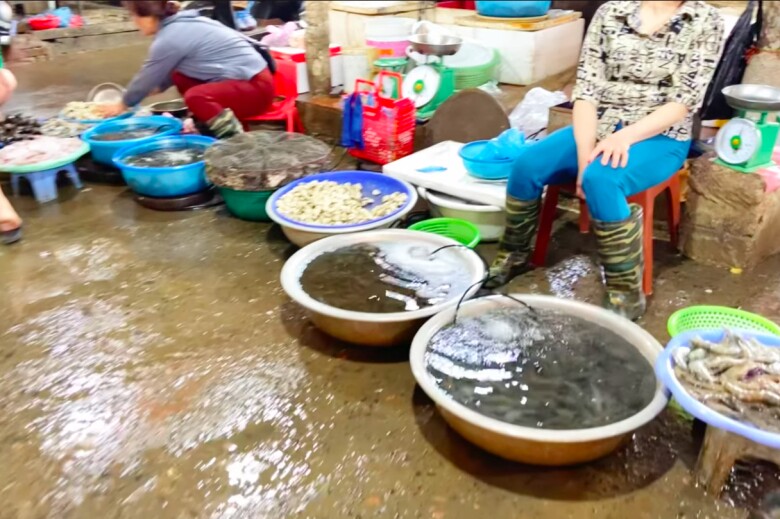
The Moc Chau Farm Town Market is more than a commercial hub; it is a “living museum” that safeguards the cultural and historical heritage of the Moc Chau highlands. Every corner, every dish, and every handicraft tells a story of the land and its people.
Amid the rapid development of tourism and urbanization, preserving cultural spaces like the Farm Town Market has become increasingly imperative. This responsibility rests not only with local authorities but also with every resident and visitor to Moc Chau.
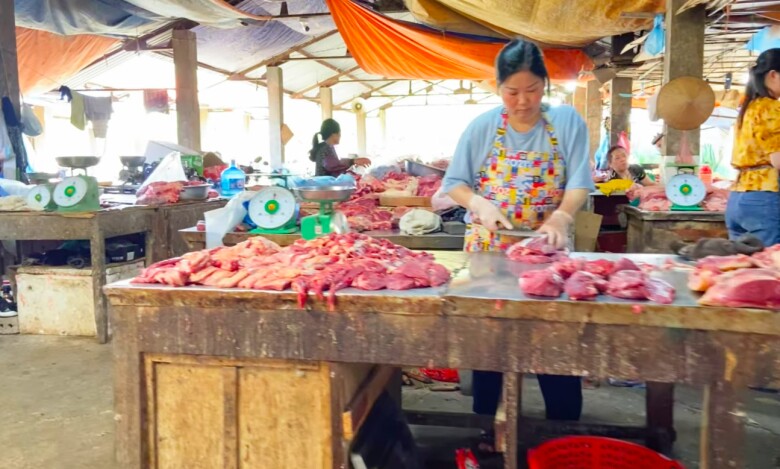
The Farm Town Market has been intertwined with the lives of local generations. Sustaining traditional cultural values here is essential to ensuring that the Moc Chau Farm Town Market remains a unique destination for generations to come.
Despite the challenges posed by the modern era, the Moc Chau Farm Town Market remains a destination of choice for those seeking an immersive experience of the lifestyle, culture, and cuisine of the Northwest highlands. It stands as a testament to the evolution of concentrated agricultural economics and a symbol of the fascinating cultural fusion between the Kinh and ethnic minorities over the past half-century.
Unveiling the Charm of a Cham King: A Pottery Village Steeped in Legend and Unique Cultural Heritage.
The village is a haven of traditional craft, a rare gem in Ninh Thuan that has preserved its cultural heritage. Visitors are invited to immerse themselves in the art of pottery, molding clay and shaping it into unique creations with the guidance of skilled artisans. It is an opportunity to connect with the local culture and create memorable, handcrafted souvenirs.
Exploring Tân Hoa Hậu Nguyễn Ngọc Kiều Duy’s Hometown: Indulging in Addictive Delicacies and Witnessing the Unique Fish Circus
The hometown of newly crowned beauty queen, Nguyen Ngoc Kieu Duy, has been captivating locals and international visitors alike. With its rustic charm and quintessential Mekong Delta characteristics, it offers a unique glimpse into the region’s culture and cuisine. The area’s scenic beauty and mouthwatering array of specialty dishes create an irresistible allure, leaving visitors with unforgettable memories of this enchanting place.
















